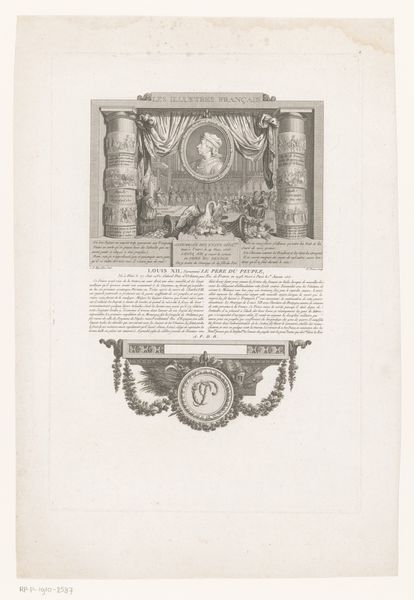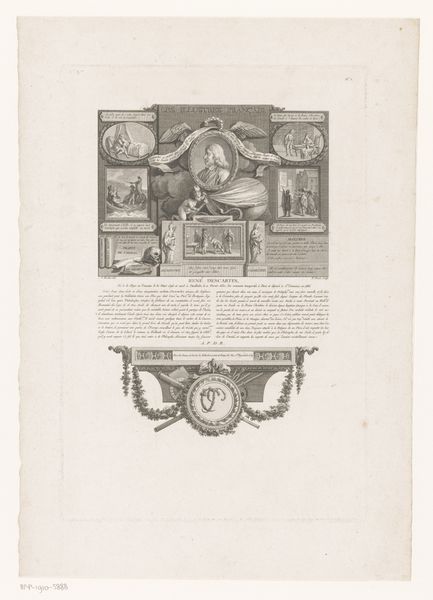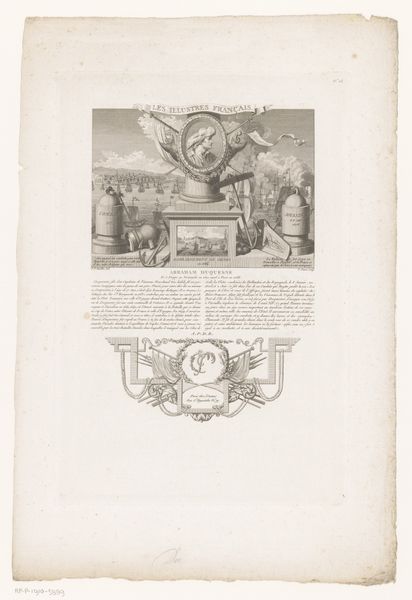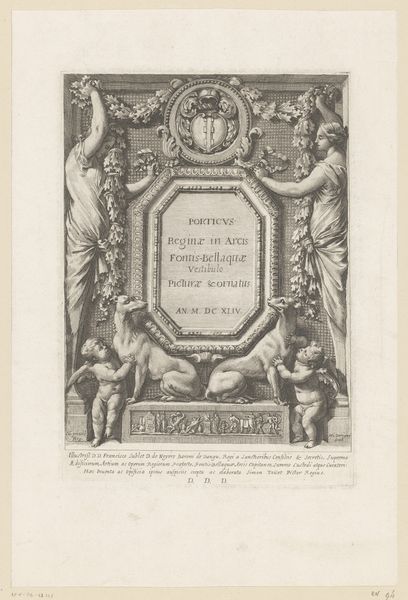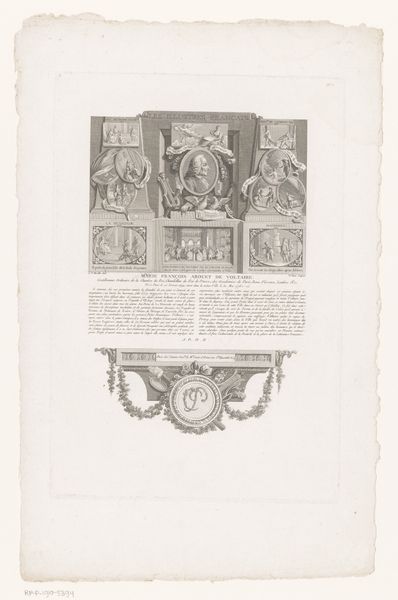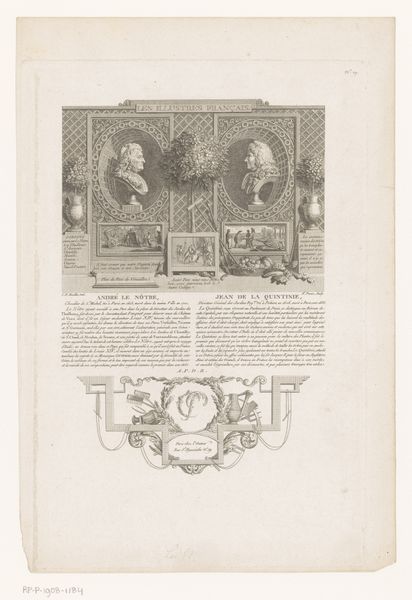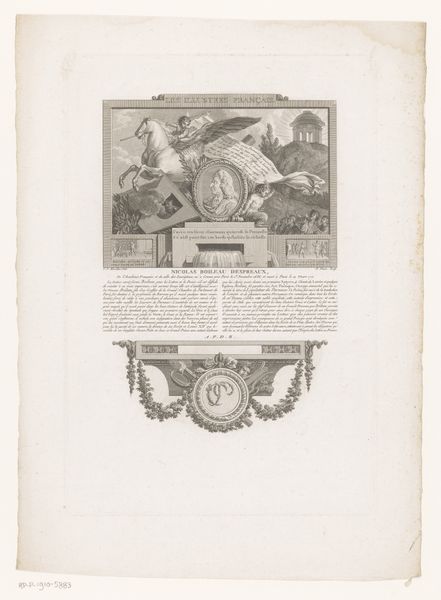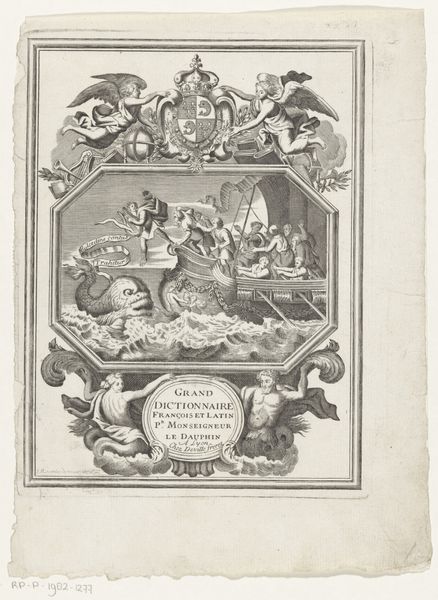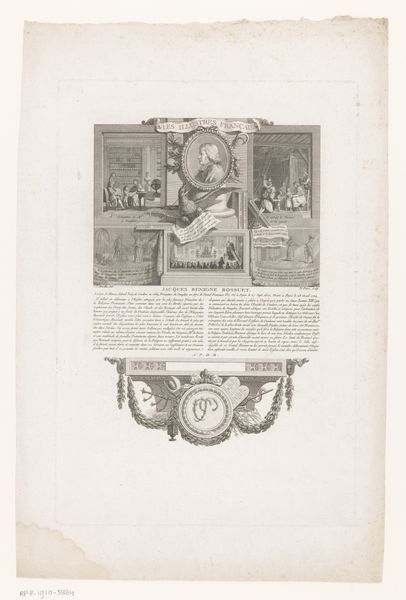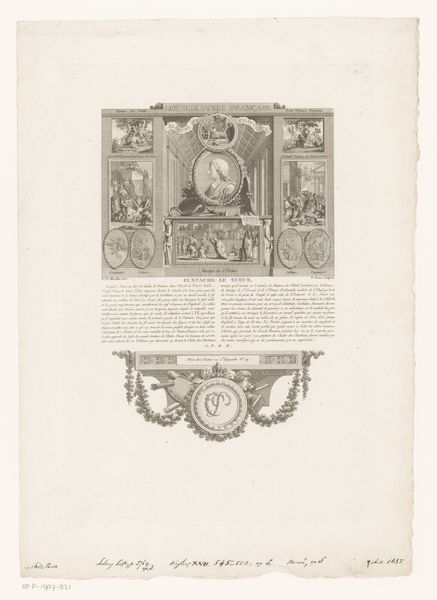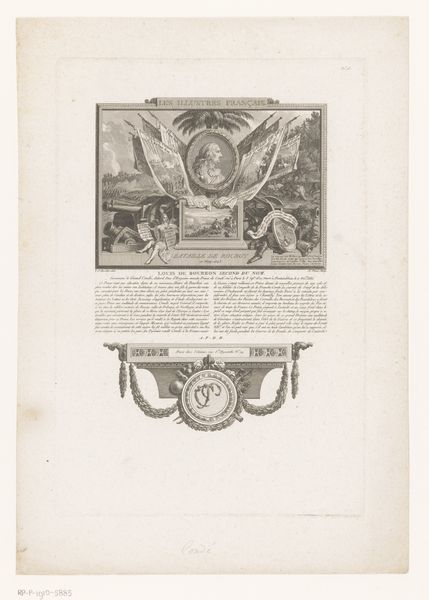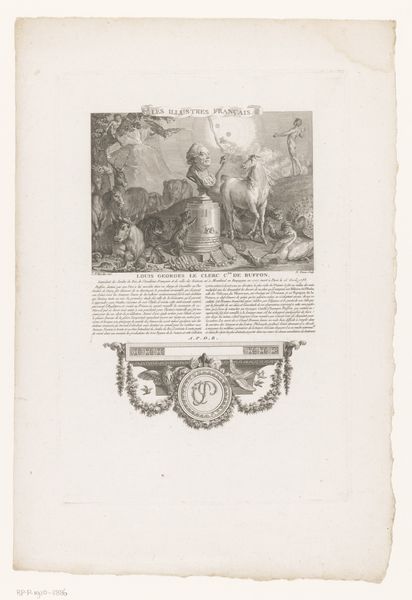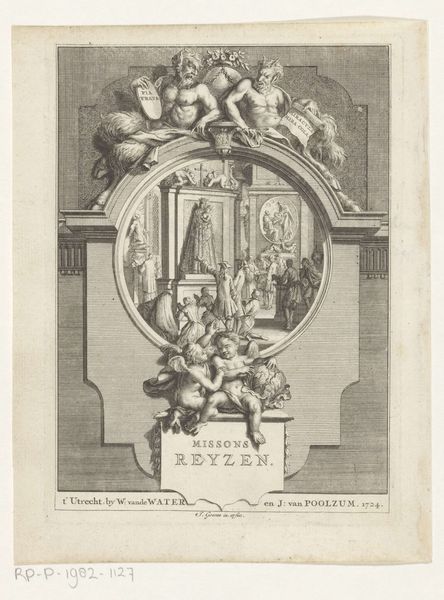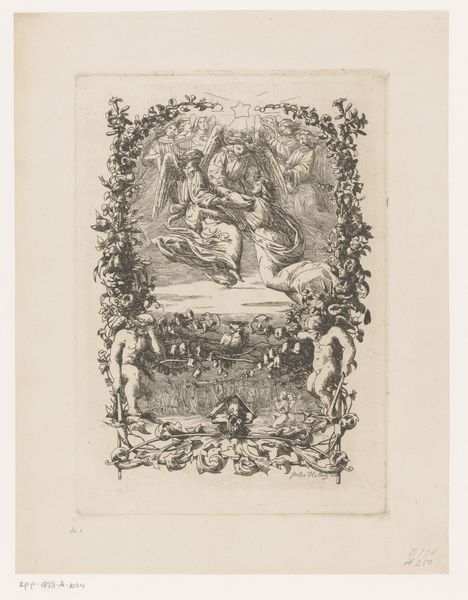
mixed-media, print, etching, paper, engraving
#
portrait
#
mixed-media
#
ink paper printed
# print
#
etching
#
old engraving style
#
paper
#
personal sketchbook
#
history-painting
#
engraving
Dimensions: height 336 mm, width 229 mm
Copyright: Rijks Museum: Open Domain
Curator: Right, so we are looking at a mixed-media print, combining etching and engraving, by Nicolas Ponce. It's titled "Allegorical Portraits of Philip II and Charles V" and was produced sometime between 1790 and 1816. Editor: It's striking. It gives me this odd sense of propaganda, but… muted. Like whispers from a history book rather than a shout. Is that intentional? Curator: Absolutely! Prints like this often served a dual purpose: commemoration and, yes, a subtle form of influence. Note how each monarch is framed within these almost theatrical vignettes teeming with symbolic details. Consider the historical moment too. Editor: I notice the figures around them and the symbols... There are flags, defeated enemies it seems, almost like trophies? The whole scene looks like an altar, the two portraits icons on each. And it's a study in contrasts – Charles V seems regal, almost serene, while Phillip II has a more stern expression. Why juxtapose them this way? Curator: The iconography sets them up as different kinds of rulers, both drawing from unique strengths of power, and contributing to the collective 'greatness' of French royalty under the title "Les Illustres Francais". Think of it as Ponce’s exploration into an era’s complicated power structures using portraiture. It almost deifies them! Editor: I can dig that. And is that text below integral to the piece? Or something separate? Curator: Integral. That script is essential to understand how Ponce directs the viewers into perceiving royalty through written, political context. I mean, imagine encountering this in its time – seeing the artistry combined with explicit justifications right there. You are forced to connect the ruler, his accomplishments and all surrounding ideas into this perfect idol. Powerful. Editor: It makes you wonder about the intended audience and what narratives they were internalizing about power. Overall, Ponce is subtly asking people to remember and believe specific aspects of these rulers, carefully building an ideological bridge between generations using allegorical portraiture. Clever! Curator: Precisely. And isn’t it interesting to consider the echoes of these choices reverberating through time.
Comments
No comments
Be the first to comment and join the conversation on the ultimate creative platform.
